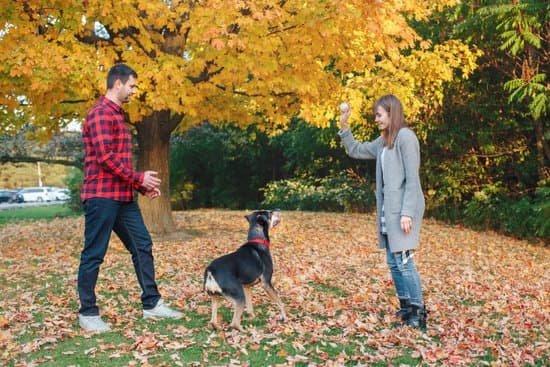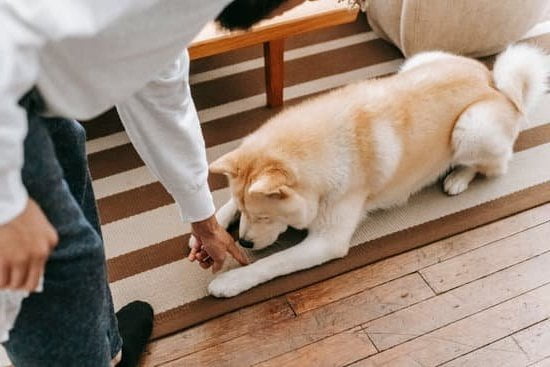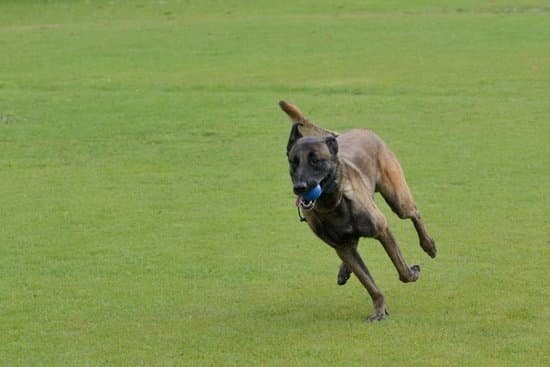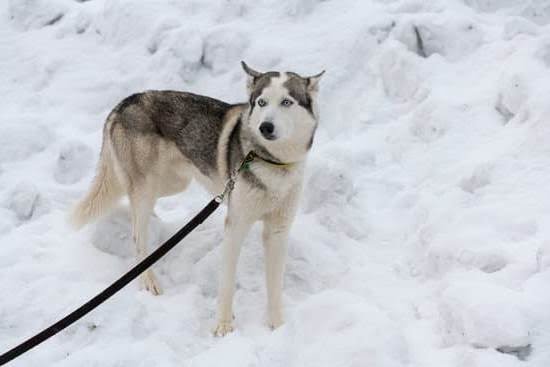One of the most common questions that dog owners have is, “How do I potty train my one year old dog?” Potty training is a crucial step in ensuring that your furry friend becomes a well-behaved member of the family.
Not only does it save you from the inconvenience and mess of accidents, but it also creates a strong foundation for other aspects of training. By following a few simple steps and understanding the basics of how dogs learn, you can successfully potty train your one year old dog and enjoy a happier and more harmonious household.
Potty training is particularly important for one year old dogs as they have likely already developed certain habits and behaviors. It’s never too late to start potty training, but establishing good habits early on can prevent future issues.
Just like with human children, consistency and routine are key when it comes to potty training dogs. By creating a structured routine around potty breaks, establishing a designated potty area, using positive reinforcement, and recognizing signs that your dog needs to go, you can effectively teach your one year old dog where and when it’s appropriate to relieve themselves.
Throughout this article, we will guide you through the steps of potty training your one year old dog. From understanding how dogs learn to tackling common challenges such as accidents and setbacks, we will provide you with all the information you need for successful potty training.
Additionally, we will offer additional tips and tricks to ensure long-term success while emphasizing the importance of patience and persistence in this process. So let’s dive in and get started on this important journey towards a clean and well-trained furry companion.
Understanding the Basics
When it comes to potty training a one-year-old dog, it is crucial to understand how dogs learn and tackle this process. Dogs are creatures of habit, and they learn through repetition and consistency. By understanding their instincts and behavior patterns, you can effectively potty train your furry friend.
One important aspect of potty training is establishing a routine and being consistent with it. Dogs thrive on routine and structure, so it’s essential to take them out for bathroom breaks at the same times every day.
This means waking up early in the morning, taking them out after meals, before bedtime, and any other time that you notice signs that they need to go. Creating a schedule not only helps your dog understand when they should go outside, but it also helps prevent accidents inside the house.
Creating a designated potty area is another crucial step in potty training your one-year-old dog. Dogs have a natural instinct to eliminate in specific areas, so having a designated spot will help them understand where they should go. This area could be a section of your yard or even a specific spot on a balcony if you live in an apartment.
Use visual cues like pee pads or markers to help your dog identify their designated area easily. Patience is key during this stage as it may take some time for your dog to get accustomed to the new spot.
To reinforce good behavior during potty training, positive reinforcement plays an integral role. Rewarding your pup for going potty outside will motivate them to continue doing so in the future. Use treats or verbal praise whenever they successfully eliminate outside in their designated area. Positive reinforcement creates a positive association with going potty outside.
Step 1
Establishing a routine and consistency is an essential first step in potty training your one year old dog. Dogs thrive on routines and predictability, so providing them with a structured schedule will help them understand when and where they should eliminate. This section will provide guidance on how to establish a routine and maintain consistency during the potty training process.
To establish a routine, it is important to set regular times for feeding your dog. Most dogs will need to eliminate shortly after eating, so it is crucial to create a schedule around their mealtimes.
Additionally, take note of the times when your dog typically goes potty throughout the day and try to incorporate those into the routine. For example, if your dog tends to eliminate first thing in the morning or right before bedtime, make sure those times are included in their daily schedule.
Consistency also involves taking your dog outside to the same designated potty area every time they need to go. By consistently bringing them to the same spot, you are helping them associate that area with eliminating.
Choose an easily accessible spot in your yard or pick a specific location during walks that you can consistently bring them back to. Having a designated potty area will also make it easier for your dog to understand where they should go when they are outside.
During this stage of training, keep an eye on your dog’s behavior for any signs that they may need to go potty such as sniffing around or circling. When you notice these behaviors, immediately bring them outside to their designated area and give them plenty of opportunities to eliminate.
If they do go potty in the correct spot, be sure to praise and reward them with treats or verbal praise. Consistently reinforcing this positive behavior will further motivate them throughout the training process.
Remember, establishing a routine and maintaining consistency is key when it comes to potty training your one year old dog. While accidents may happen initially, with time and patience, your dog will start to understand the routine and develop good potty habits. In the next section, we will discuss creating a designated potty area for your dog.
Step 2
Creating a designated potty area is an essential step in potty training your one-year-old dog. Having a specific spot for your dog to relieve themselves will help them understand where it is appropriate to go and make the training process smoother. Here are some key points to consider when creating a designated potty area for your pup:
Choose the Right Spot
When selecting the location for your dog’s potty area, there are a few factors to keep in mind. It should be easily accessible and close to the main areas of activity in your home. Dogs typically prefer outdoor areas with grass or gravel, so try to find a spot with these elements if possible.
Create Boundaries
Defining boundaries around the potty area is crucial in preventing accidents and confusion. Use physical markers such as garden fences or small barricades to clearly indicate the designated spot. This will help your dog understand where they should eliminate and prevent them from going elsewhere.
Odor Control
It’s important to manage and control any odors associated with the potty area, especially if it’s indoors or on a balcony. Regularly clean up waste using appropriate cleaning solutions to eliminate any lingering smells that may attract your dog back to the same spot. Consider using odor-neutralizing sprays or products specifically designed for pet urine removal.
Consider Alternative Options
Sometimes, it may not be feasible to have an outdoor potty area, especially for those living in apartments or without access to a yard. In such cases, you can create an indoor alternative such as puppy pads or artificial grass patches designed for dogs. Make sure to follow the same principles of establishing boundaries and cleanliness in these indoor options.
By creating a designated potty area for your one-year-old dog, you are providing them with clear guidance on where it is appropriate to go. Consistency is key in this step, so always direct your dog to their designated spot when it’s time to eliminate. With proper training and reinforcement, your dog will soon understand and follow this routine, making potty training a successful endeavor.
Step 3
Positive reinforcement and rewards play a crucial role in potty training your one-year-old dog. This step is essential for teaching your dog what behavior is desired and encouraging them to continue practicing good bathroom habits. By associating positive experiences and rewards with correct elimination, you can motivate your dog to consistently use their designated potty area.
The Power of Positive Reinforcement
Positive reinforcement involves rewarding your dog for exhibiting the desired behavior, in this case, going potty in the designated area. This method has proven to be more effective than using punishment or negative reinforcement techniques. When you catch your dog successfully eliminating in the right place, immediately provide verbal praise or use a clicker to mark the behavior followed by a reward such as treats, playtime, or affection.
Choosing the Right Rewards
Selecting appropriate rewards is an essential aspect of positive reinforcement during potty training. Find high-value treats that your dog absolutely loves and only give these as rewards for successful elimination. High-value treats could include small pieces of cooked chicken or freeze-dried liver treats. It’s important to reserve these special rewards solely for potty training sessions so that they become highly desirable incentives for your dog.
Consistency is Key
Consistency is key when it comes to positive reinforcement. Make sure to immediately reward your dog every time they eliminate in the designated area during the early stages of training. Gradually decrease the frequency of rewards as your dog becomes more consistent and reliable. However, intermittent reinforcement should still be used occasionally even after the initial stages of training are complete. This means randomly rewarding your dog sometimes but not always to reinforce their good potty habits.
By utilizing positive reinforcement and rewards effectively, you can accelerate the potty training process of your one-year-old dog. Remember to provide immediate praise and rewards when you catch them doing their business in the right spot and gradually decrease the frequency of rewards as they become more consistent. With time and patience, your dog will understand that going potty in their designated area results in positive outcomes, ultimately leading to a successful potty training experience.
Step 4
One of the key aspects of successful potty training for a one-year-old dog is recognizing and addressing their signs of needing to go. Dogs often exhibit certain behaviors or cues that indicate they need to relieve themselves, and as a responsible owner, it is essential to pay attention to these signals.
To effectively recognize these signs, it is important to understand common indicators that your dog may need to go. Some common signs include sniffing the ground or circling in a specific area, restlessness or sudden change in behavior, whimpering or barking at the door, or scratching or pawing at the floor. Additionally, if your dog suddenly stops playing or becomes distracted from its current activity, it might be a sign that they need to use the bathroom.
Once you have successfully recognized these signs, you must address them promptly. Promptly taking your dog outside to their designated potty area is crucial. Use verbal cues such as “potty” or “go outside” consistently during this process so that your dog associates those words with their toileting behavior.
It is also important to remain patient and wait for them to finish before rewarding them with praise or treats. This positive reinforcement encourages your dog to associate going potty in the correct area with positive experiences.
To further reinforce their understanding of where they should go, consider using a command word when your dog eliminates in the right spot. For example, saying “good potty” while they are relieving themselves can help cement the connection between the act and the word. Be consistent and use this command word every time they successfully go in their designated potty area.
In summary, recognizing and addressing the signs of needing to go is crucial for successful potty training. By closely observing your one-year-old dog’s behavior and promptly guiding them to their designated potty area, you can reinforce good habits and foster a strong understanding of where they should eliminate.
Remember to use consistent verbal cues and positive reinforcement to help your dog associate the correct behavior with praise and rewards. Be patient and persistent, and soon enough, your furry friend will be fully potty trained.
Common Challenges
Dealing with accidents and setbacks is a common challenge when potty training a one-year-old dog. Despite our best efforts, accidents are bound to happen during the training process. It’s important to approach these situations with patience and consistency to ensure continued progress.
One of the main reasons accidents occur is due to a lack of supervision or inconsistency in the training routine. Dogs thrive on routine and structure, so it’s crucial to establish a consistent schedule for potty breaks. This means taking your dog outside at regular intervals throughout the day, particularly after meals, naps, playtime, and waking up in the morning or after a nap.
It’s also important to closely watch your dog for any signs that they may need to go potty. These signs can vary from dog to dog but may include pacing, sniffing around, circling, whining, or heading towards the door. By recognizing these signals early on and immediately taking them outside to their designated potty area, you can prevent accidents from occurring indoors.
In the event that an accident does occur inside your home, it’s important not to scold or punish your dog. Instead, calmly clean up the mess using an enzymatic cleaner specifically designed for pet stains and odors. Scolding your dog can create fear and anxiety around potty training, leading to setbacks in their progress. Remember to be patient and consistent throughout the process as accidents are simply a part of learning for your one-year-old dog.
| Common Challenges | Solutions |
|---|---|
| Lack of supervision or inconsistency in routine | Establish a consistent schedule for potty breaks and closely supervise your dog |
| Failing to recognize signs of needing to go potty | Learn your dog’s specific signs and take them outside immediately when you notice them |
| Punishing or scolding after accidents | Instead of punishment, calmly clean up the mess and continue with consistent training |
Additional Tips and Tricks to Ensure Success
In addition to establishing a routine, creating a designated potty area, using positive reinforcement, and recognizing signs of needing to go, there are several additional tips and tricks that can help ensure success in potty training your one year old dog. These strategies can make the process smoother and more effective for both you and your furry friend.
Firstly, it is important to practice patience and remain consistent throughout the entire potty training process. Consistency not only applies to maintaining a regular schedule but also refers to using the same verbal cues or commands when prompting your dog to eliminate. This helps them understand what is expected of them and reinforces their association between the cue and the desired behavior.
It can also be helpful to establish a set feeding schedule for your dog. By feeding them at consistent times each day, you can better predict when they will need to relieve themselves. Most dogs will need to eliminate shortly after eating, so having a routine around meal times can aid in potty training efforts.
Another tip is to limit your dog’s access to areas of the house that are difficult to supervise during the initial stages of training. This could involve using baby gates or closing doors to confine them within a smaller space where accidents are easier to manage. As your dog becomes more reliable in their potty training, you can gradually expand their access to other parts of the house.
Additionally, it is crucial not to punish or scold your dog for accidents. Negative reinforcement can create fear or anxiety around elimination, making it harder for them to learn proper potty habits. Instead, focus on reinforcing positive behaviors and redirecting any mistakes by quickly taking them outside or guiding them towards their designated potty area.
Finally, consistency extends beyond just yourself; if there are multiple caretakers involved in raising your dog, ensure that everyone is on board with following the established routine and rules for potty training. Consistent training methods will prevent confusion and help your dog learn faster.
By incorporating these additional tips and tricks into your potty training routine, you can increase the likelihood of success with your one year old canine companion. Remember, patience and persistence are key, and with time and consistent effort, your furry friend will become fully potty trained, leading to a happier and healthier life for both of you.
Patience and Persistence
Potty training a one year old dog requires patience and persistence. It is important to remember that every dog is different and may learn at their own pace. By following the steps outlined in this article and being consistent, you can set your dog up for success in their potty training journey.
One important aspect of potty training is establishing a routine and consistency. Dogs thrive on routines, so it is recommended to take them out to their designated potty area at regular intervals throughout the day. This could be first thing in the morning, after meals, before bedtime, and periodically throughout the day. Consistency is key, as it helps reinforce the behavior you want them to learn.
Creating a designated potty area for your dog is another important step in successful potty training. This can be an outdoor area or even a specific spot inside your home if you are using indoor potty training methods. By consistently taking your dog to this designated area, they will begin to associate it with going potty. Using verbal cues such as “go potty” or “do your business” can also help them understand what you want them to do.
Positive reinforcement and rewards play a crucial role in motivating your dog during the potty training process. When they successfully go potty in the designated area, praise them with enthusiasm and offer treats or verbal rewards such as saying “good boy/girl”. This positive reinforcement helps them understand which behaviors earn them rewards and reinforces their desire to continue doing those behaviors.
It’s important to note that accidents can happen during the potty training process, especially in the early stages. It’s essential not to punish or scold your dog for accidents as this can cause anxiety and make them afraid of going potty in front of you. Instead, clean up any accidents calmly without drawing attention to them and continue following the steps outlined in this article.
By staying patient and persistent throughout the potty training process, you can set your one year old dog up for success. Remember that accidents and setbacks are a normal part of the learning process, so it’s crucial to remain consistent and reinforce positive behavior. With time, patience, and lots of positive reinforcement, your dog will eventually become fully potty trained.
Conclusion
In conclusion, successfully potty training your one year old dog is a cause for celebration. It is a milestone that indicates not only your dog’s growth and development but also your commitment as a responsible pet owner. By following the steps outlined in this article and implementing additional tips and tricks, you can ensure that your dog becomes fully potty trained.
The benefits of potty training extend beyond just having a clean and odor-free home. It helps to establish a strong bond between you and your furry friend, built on trust, communication, and understanding. Potty training teaches your dog important life skills such as discipline, self-control, and how to follow routines. These skills will prove beneficial in other aspects of their training as well.
Additionally, proper potty training prevents health issues that may arise from unsanitary conditions. Frequent accidents can lead to bacterial infections and discomfort for your pet. By consistently reinforcing positive behaviors and redirecting any setbacks or accidents, you are providing a safe and healthy environment for your dog to thrive in.
Remember that patience and persistence are crucial throughout the potty training process. Each dog is unique and may learn at their own pace, so it is important not to get discouraged by setbacks or accidents along the way.
With consistency, positive reinforcement, and understanding of your dog’s needs, you will soon witness the rewards of successful potty training. So celebrate each milestone achieved with praise, treats, or playtime – knowing that you have provided your one year old dog with an important foundation for a happy and well-behaved life together.
Frequently Asked Questions
Can you still potty train a 1 year old dog?
Yes, it is still possible to potty train a one-year-old dog. While it may be a bit more challenging compared to training a younger puppy, with consistency and patience, it can still be done successfully.
The key here is to approach the training process as if you were starting from scratch, using positive reinforcement techniques and rewarding your dog for desired behavior.
Why is my 1 year old dog still not potty trained?
There could be various reasons why your one-year-old dog is still not potty trained. It’s important to remember that each dog is unique, and they all learn at different paces. One reason could be that the initial training efforts were inconsistent or ineffective.
Additionally, certain factors such as changes in routine, stress, or anxiety can hinder the learning process. Identifying any underlying medical issues is also essential; conditions like urinary tract infections may cause accidents despite being otherwise house-trained.
How do I teach my 1 year old dog not to pee in the house?
Teaching a one-year-old dog not to pee in the house requires consistent effort and a few steps to follow. Firstly, establish a routine and stick to it by taking your dog outside frequently—especially after meals or naps—to give them ample opportunities to eliminate outside. Supervise your pet indoors and restrict access to areas where accidents tend to occur until they have better control over their bladder. If you catch them starting to pee inside, calmly interrupt them by saying “no” and immediately take them outside to finish in the appropriate spot.
Rewarding them with praise and treats when they go outside reinforces the desired behavior. Additionally, using scent deterrents or crate training can prevent accidents when you cannot actively supervise your dog. Remember that consistency, patience, and positive reinforcement are essential in this process of retraining your older pup about appropriate bathroom habits within the house environment.

Welcome to the blog! I am a professional dog trainer and have been working with dogs for many years. In this blog, I will be discussing various topics related to dog training, including tips, tricks, and advice. I hope you find this information helpful and informative. Thanks for reading!





